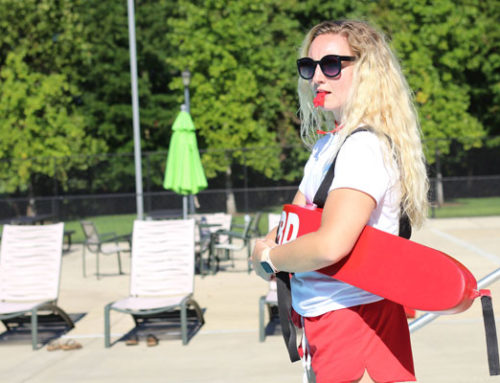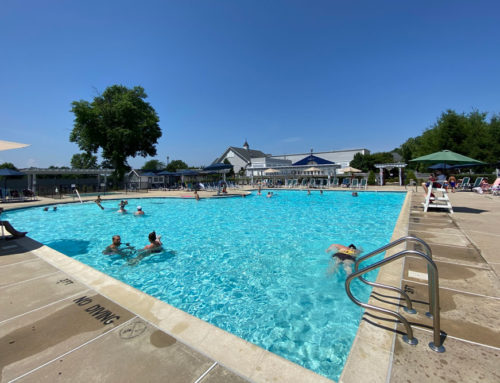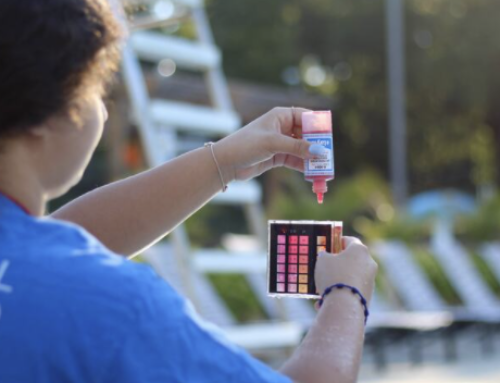
Learn the Latest in Pool Cover Technology
Every pool manager knows how important it is to properly manage the pool when people are in the water. Chemical levels need to be monitored, lifeguards must remain vigilant, and other measures need to be taken to ensure swimmer safety. However, it’s just as important to keep the pool properly maintained when it’s not in use.
That’s where pool covers come in. As anyone in pool maintenance can attest, pool covers can be valuable tools for keeping debris out of the water, reducing heat loss and evaporation, and even preventing drowning incidents.
Pool cover technology continues to evolve, with new materials and new deployment systems. If you’re thinking about installing a new pool cover or updating or repairing your existing one, you’ll want to be aware of these latest advances.
The Submarine Approach
One of the most recent innovations in pool cover technology is a “submarine” approach, an invention by Ami Kolechstein of Vancouver, Canada. As Aqua Magazine reports, the benefits are extensive, but the technology is surprisingly simple. Throughout the day when the pool is open, the cover rests on the bottom of the pool floor. As the pool closes down for the night, Floatek’s interlocking tiles are filled with a very small amount of air. Buoyancy and gravity do the rest of the work as the tiles float to the pool’s surface and lock into place, via a flexible pontoon, to seal in the water. Before the pool reopens the next day, the air is deflated and the cover sinks back to the pool’s floor.
This technology is not only simple and effective, but also energy efficient. The cover doubles as a method of keeping out debris and keeping in warmth. Plus, since it doesn’t use any hydraulics or electric motors, it consumes less energy than many other methods.
“Installing an automatic cover on an existing pool is an expensive process,” Kolechstein tells Aqua. “Floatek not only can be made to fit pools of any size or shape, new or existing, but it can provide a return on investment within approximately three years. It functions both as a safety cover and insulator to dramatically reduce heat loss due to evaporation.”
Other Innovations
Floatek is just one of several technologies that have the potential to improve the way commercial pools get covered.
King Technology reports the increasing popularity of solar covers, often called “bubble covers” because they resemble a giant sheet of bubble wrap. Made of durable, high grade plastic and UV inhibitors, solar covers blanket the pool’s surface. They are relatively inexpensive and they can help cut your energy costs by preventing evaporation, particularly in areas with a dry, windy climate.
Liquid pool covers are also gaining traction in some parts of the country, particularly in indoor pools where evaporation and heat loss pose a significant challenge. School pools in Ann Arbor, Michigan, installed a liquid cover system that uses an isopropyl alcohol product. The product has the consistency of vegetable oil, enabling it to cling to the surface of the pool. A programmable pump distributes most of the product when the pool is not in use. However, it does not need to be removed when swimmers hit the water, as splashing and movement cause it to disperse. The liquid cover re-forms once the water is calm again.
Other innovations in pool covers relate to how they are deployed. Traditional manual covers, which usually have a crank at one end of the pool, require a significant amount of elbow grease to extend, particularly in a large pool. For that reason, an increasing number of pool operators have turned to electric-powered covers. These covers roll out with the push of a button, covering the pool (and later retracting) in a matter of seconds.
An added benefit to using electric covers: They can be set on a variety of timers, which can be remotely controlled from almost anywhere. Much like a remote car starter, devices can be installed in a pool to remove the cover and turn up the heat before you even step outside.
When coupled with sensor technology, automation offers more than convenience. Rain, wind and humidity sensors can provide “a head’s up” when bad weather looms, allowing you the time you need to protect the pool. Sensors can also be installed to alert you to activity in and around the pool after closing time — information that can be vital for preventing drowning incidents.
If you’re interested in exploring new options for covering your pool, you don’t need to do it alone. At American Pool, we offer a full range of pool renovation and maintenance services, including pool cover repairs. Get in touch to find out how we can help with your pool cover needs.





